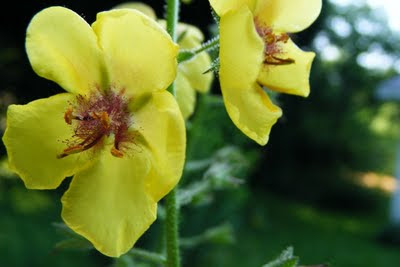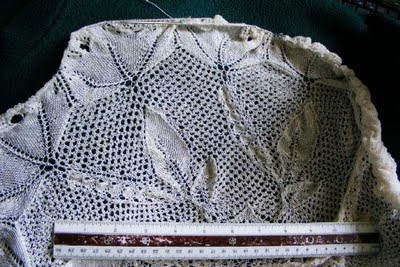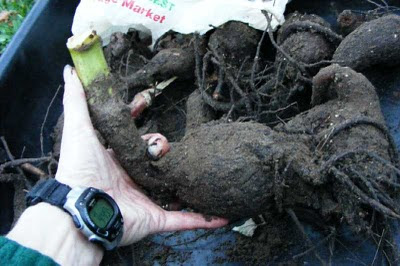Flowers and Flowery Lace Knitting
I have a degree in horticulture, and my area of specialization was floriculture, but I don't have anything like an organized flower garden. I tend to plant things here and there, and because I recognize the seedlings and the early sprouts, mow around them in the grass.
I have flowers all over the place in random clumps. My brain presents me with scientific names memorized decades ago - where does it store all this stuff? I remembered the moth mullein was a Verbascum, but I didn't remember the species, V. blattaria.
I remembered the moth mullein was a Verbascum, but I didn't remember the species, V. blattaria.
My swamp milkweed, Asclepias incarnata, is not growing in a swamp. It is growing out of a crack in a concrete porch slab from the original farmhouse site, about as un-swampy as you could get.
Ever since I noticed a few years back how much the hummingbirds liked the catnip flowers, I've encouraged it, but they aren't the only thing that likes it.
This Silver-spotted Skipper, Epargyreus clarus, likes it, too. The skipper is very territorial, and comes back to the catnip over and over throughout the day. When I went out to take its picture, it flew off, but not very far, and within a minute was back where I could take a close-up.
And here's my White Henryi lily again. I just realized I bought the original bulbs about 25 years ago, and it's come back reliably year after year. 2011 has been a very rainy year, but it made a fine show back in 2008, which was dry.
White Henryi is one of the lilies Donna Lee was talking about in her comment, the ones with a scent that knocks you down and sits on you. Most of the Oriental lilies are like that - the green nectary star in the center is a fairly reliable indicator of strong-scentedness.
Personally, I'm not a fan of scents that knock me down and sit on me, so the majority of my lilies are Asiatics with little or no scent.
The knitting on Glöckchen is done:
Each of the twelve repeats has twenty-two crocheted chains, and I am not a very fast crocheter. I was hoping to finish by Saturday, but along about Thursday afternoon I realized I wouldn't make it. I'm still plugging along, though, because I can hardly wait to block this thing!
Labels: gardening, herbert niebling, lace knitting, wildflowers



















































